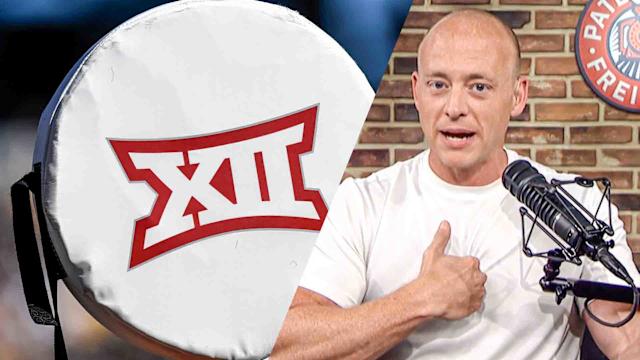
WACO, Texas — It’s after 6 p.m. on a Wednesday in August and Dave Aranda is moments away from having himself a ninth cup of coffee.
Such is life during preseason camp for a man who not only serves as the head coach of Baylor but also coordinates its defense and calls defensive plays.
“It takes a lot of coffee,” he says with a smile. “Texas pecan roast.”
Aranda explains that he has installed more defensive play-calls this offseason than he has in any other year of his coaching career. Last season, his first calling a defense in five years, he learned a hard truth: His defense — for years heralded as one of the most innovative in football — failed to evolve with its offensive counterpart.
It has grown stale.
Now is the time, Aranda says, to change, add new wrinkles and create complexities. It’s a weird place for a coach who many describe as a “mad scientist” of defensive football, operating a scheme for years that felt so far ahead of everyone else.
Well, look out, he’s back in the lab.
“When you get older, there’s an element of, ‘Old guy yelling at the cloud,’” said the 48-year-old Aranda. “You have beliefs and you harden around them. You’ve got to let that stuff go.”
The defensive overhaul is only a piece of the brewing change in Waco.
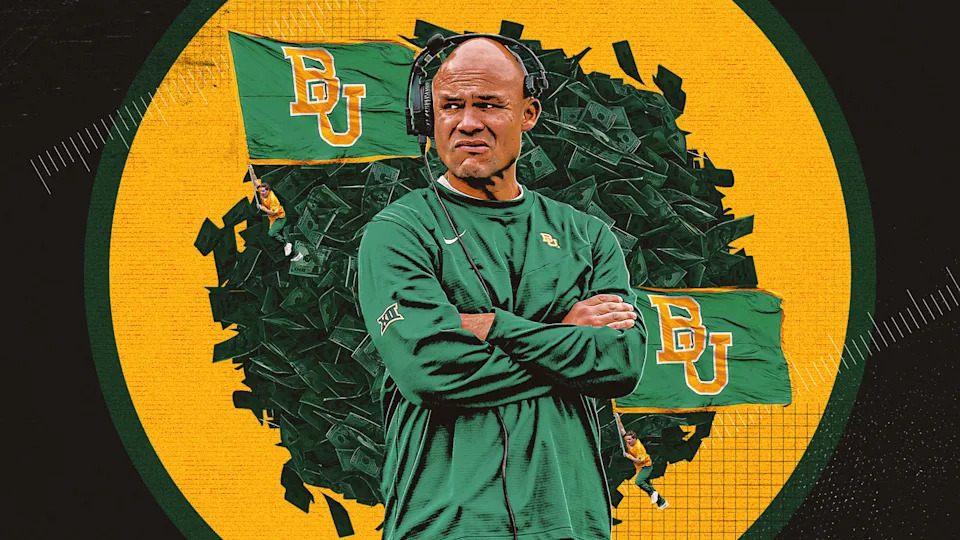
Playing catch-up
Baylor, a small, private faith-based institution in the heart of Texas, resisted the intentional pay-for-play method in compensating athletes until a year ago, officials here acknowledge. For example, the name, image and likeness budget for football grew by more than $5 million from 2023 to 2024 and, with the onset of athlete revenue-sharing this year, it may reach $15 million.
As the 2025 college football season arrives so too does history: It is the first year in which schools can directly compensate athletes from their own coffers within a capped system. Each Division I university is permitted to distribute $20.5 million to their athletes in Year 1 (July 2025-June 2026) as part of the NCAA’s landmark settlement of three antitrust cases, often referred to as House.
Baylor serves as, perhaps, one of the more extreme examples of a school whose roster value has gone from a little to a lot very quickly.
“We now have dudes making upwards of however many hundreds of thousands,” Aranda says. “It’s completely different. Two years ago, I would have thought, ‘No way.’”
In fact, the roster is talented enough that many are expecting the Bears to contend for the Big 12 championship. One respected prognosticator, Phil Steele, even picked them to win the league.
Is Baylor really poised for a resurgence? Aranda is reshaping a defense with 10 returning starters and offensive coordinator Jake Spavital is now in his second year and returns his quarterback, top two running backs, top two receivers and a veteran offensive line.
The program’s opener, at home Friday night against Auburn, stands as a sneaky intriguing matchup — an appetizer, you might say, to the weekend’s main course: Texas-Ohio State; LSU-Clemson; Alabama-Florida State; and Miami-Notre Dame (Sunday).
What’s not to like about one of the nation’s touted defensive gurus, Aranda, against one of football’s most innovative offensive minds, Hugh Freeze, to kick off the year?
Freeze likes the big play, Aranda says, dissecting the matchup after an August camp practice. Baylor allowed 51 passes of at least 20 yards last season to rank 120th out of 134 full-time FBS members (a reason, undoubtedly, for his overhaul). Auburn last season completed the 30th-most such passes in the nation.
“It’s perceived strength versus weakness," Aranda said.
This year, Baylor is more prepared to face an SEC program from a talent standpoint, says athletic director Mack Rhoades. The school began following many of its rivals in seriously funding its football roster after the 3-9 season in 2023.
This year alone, Baylor signed 24 transfers, nearly as many as the school added the previous three years combined. This year’s crop includes players from Michigan, Oregon, Alabama, Ohio State and Auburn — many of them expected to contribute immediately.
“We fell behind not bringing in the juniors and seniors in the portal and using NIL to do it,” Rhoades said. “Well, when you’re 3-9, you better change something. If we are going to compete in this world, we had to get our NIL, pay-for-play money competitive.”
It’s been quite a jump financially from the limited compensation paid to the roster in 2021 and 2022 and, Aranda says, the standard $2,000-$5,000 that each player received in 2023.
But with the increase in cash comes conflicted feelings here — and at other universities across the country. While administrators and coaches support athletes earning compensation, they fear the rapid escalation in money to a young person may negatively impact their academic pursuit, athletic focus and, at Baylor, faith-based learning.
“When you move into a model that becomes far more transactional than it has been historically, for some of our coaches, it was a hard transition to make,” said Linda Livingstone, the Baylor president and, for the past three years during the NIL era, the chair of the NCAA Division I Board of Directors.
“You lay the NIL money across that and some of our coaches are trying to figure out, ‘How do you maintain that transformational element without doing the NIL in the same way some others are doing it?’ We’ve learned from that experience: You’ve got to do the NIL in a competitive way while layering around what we think is really important to the transformational experience at Baylor.”
More money, more problems?
Across the country, university officials are attempting to rectify the mistakes of the past — lifting the prohibition on compensating athletes — while balancing the realities of the future: Athletes, some of them earning more than their own parents and coaches, still having academics as a requirement.
It’s the result of a college sports industry that finds itself caught in purgatory, clinging to a long-held higher education environment while, at the same time, swiftly moving toward a professional model.
“One of the struggles is getting guys to go to class,” Aranda said. “You ask the players and they say, ‘I’m getting paid to play. I’m not getting paid to go to school.’
“We want to balance the school, faith and football. But once the money comes in, it leans to football. If mom makes $60,000 and dad makes $60,000 and a school says you are going to get paid $300,000, it’s hard for them to see where school has its importance.”
To a degree, the entire major college football world is facing such an inflection point.
Will money change, or has money already changed, the behavior of players who still must satisfy an academic standard? How does this new compensation impact a university’s mission, values and future and its tether to major college sports?
“I think you may even see the day in the not too distant future where players don’t have to go to school,” Utah head coach Kyle Whittingham said. “That’ll be an option. It’ll be a true minor league. It’s sad to say.”
For some, that is a non-starter.
A full scholarship at Baylor is worth about $85,000 annually and the school says its undergraduate placement rate of employment is 92%. Graduate and you’ll almost certainly land a job within the first 180 days.
“You can’t come and be a Baylor student-athlete if you’re not going to class,” Rhoades said. “We will hold that line. Why? We are doing that young man or woman a disservice if we don’t.”
The general public wants college athletes to attend classes, according to a study released earlier this month by the Knight Commission, a group focused on promoting educational reforms in college sports. About 80% of those polled believe it is “extremely or very important” for players to be enrolled as full-time students and graduate.
Maintaining the academic element is one thing. Preventing unwanted pressure on 18- to 22-year-olds — now making thousands of dollars — is another.
Many coaches who spoke to Yahoo Sports believe that the cutting of players from rosters, though against NCAA rules and House settlement terms, is likely to rise in this new era. As athletes are paid more, the pressure to perform increases. Some schools even include performance standards or thresholds in revenue-share agreements with athletes.
The open transfer market can work both ways: Sure, players can often leave at any point, but schools are free to push them to leave as well. In fact, several school officials polled for this story say they are signing a majority of their athletes to one-year contracts.
“When you are basically buying people, kids get spoken of as usable or replaceable,” Aranda said. “Those are my fears with doing all of this for money. Something easily bought can be easily thrown away.”
It is a “risk” to pay a young player “big money,” Cincinnati head coach Scott Satterfield said. Why? What if they don’t pan out?
The cutting has already started happening, according to Kansas head coach Lance Leipold.
“There will be recalibration and demotion,” he said. “I asked a kid why he left his previous school and he said, ‘Coach, they cut my money.’”
How coaching staffs are handling money talk with players varies.
At Baylor, each position coach is assigned a monetary figure he can spend annually for his group. “A lot of them are uncomfortable seeing that number,” Aranda said.
Discomfort exists on many campuses from coaches who aren’t necessarily accustomed to talking money with players. That’s why, on many staffs, coaches are removed from those discussions. Financial talks are left with the general manager, perhaps a second personnel staff member and the head coach.
“We don’t talk to the players about money,” Oklahoma State head coach Mike Gundy said. “Money is an issue in all walks of life. Money causes divorces, families to breakups, ruins relationships with brothers and sisters.”
Aranda lives with concerns.
“How long of a leash do you have for kids to produce?” he asks. “They are kids, but how much money is attached to them? What if you’re not seeing the results? Is it going to be, ‘We paid this money and he’s not performing! Get him out!’ We’ve been the opposite of that.”
Beating the 'beaters'
Aranda is juggling plenty right now, enough that Rhoades even expresses concerns that he’s stretched too thin. The role of a head coach today requires so much attention on the business, brand and recruiting side.
Can he call the defense successfully? Can he overhaul the unit well enough?
On this particular Saturday, he’s itching to return to the dark lair of the film room — his happy place. His defensive overhaul is focused on creating more play-calls and responses to offensive units that identify and exploit his defensive looks.
Last spring, he brought in one of the most successful coaches of all time in the state of Texas: Gary Patterson, the former TCU leader who helped explain to Aranda how to balance both coordinating a defense and serving as a head coach, while also assisting with more aggressive adjustments.
“The Big 12 is so spread out with types of offenses that you gotta be able to play leverage,” Patterson said. “Dave was interested in thinking from the back [secondary] forward instead of the front to the back.”
The time with Patterson helped Aranda break free of what he terms his “old man” philosophy of “play simple stuff and play it well.” It’s time, he says, to jazz it up. For instance, he’ll enter a game this season with upward of a dozen calls — that’s four times the amount he’s used previously.
The goal: Beat the offensive “beaters,” an offensive unit that continuously adjusts pre-snap to a defense’s alignment. He compares his new approach — new calls that look the same as his base defense — to a pitcher in baseball. To fool the batter, a pitcher’s windup and release must look identical for each pitch.
Last season, Aranda’s did not.
“You’re trying to execute stuff in the game and the people that you’re playing know what you’re in. I never acknowledged the beaters as much as I do here. Maybe it’s because we had erasers at LSU,” he says, a reference to his time as coordinator in Baton Rouge with NFL first-round draft picks such as Arden Key, Jamal Adams and Patrick Queen.
As the clock here moves closer to 7 p.m., Aranda begins to rise from his chair after a lengthy interview. He moves toward the door and then shuffles down the hallway.
It’s time to get back into the lab. No more money talk. No more strategy talk.
Coffee and film await.
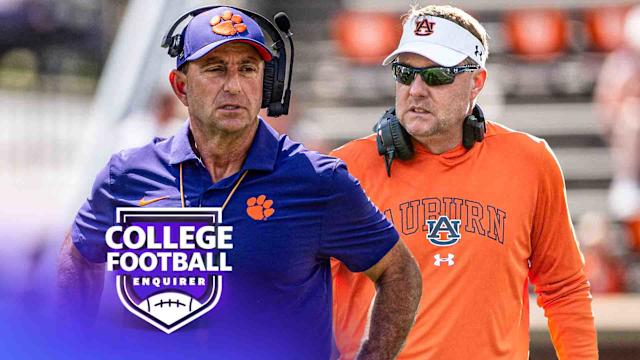


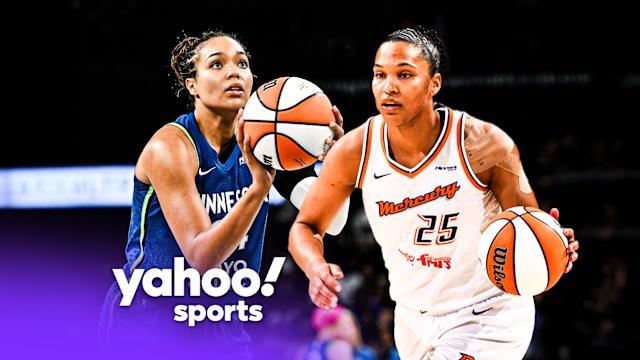
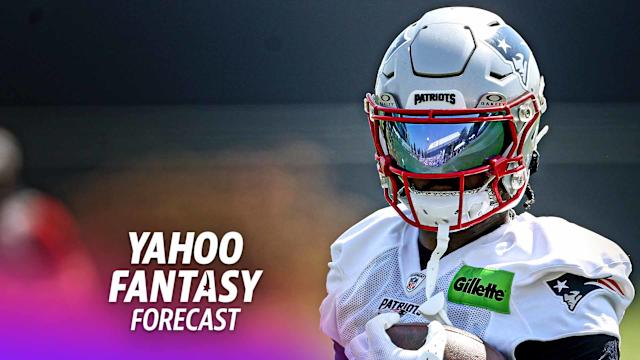


Comments